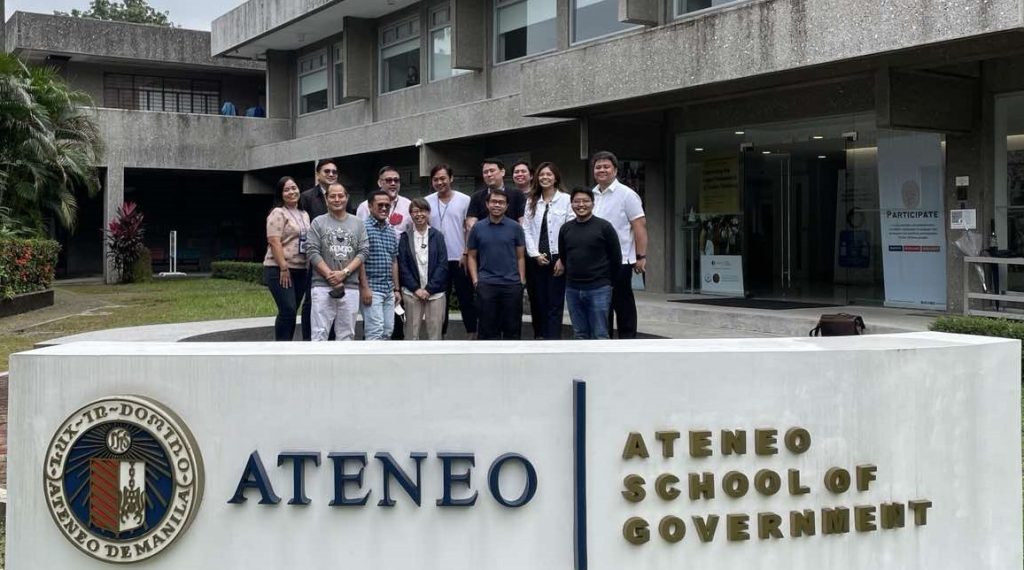- National Policies
Tobacco products are regulated products. The Executive Department has issued several Executive Orders, Administrative Orders and Implementing Circulars. The Philippine Legislature has enacted Republic Acts. In this policy review, we cite the major regulatory policies which govern the 1) imposition of taxes, 2) restrictions on use, sale and distribution in terms of age and point of sale, 3) bans on use in certain places and designation of smoking and vaping areas, 4) restrictions on advertising, promotion and sponsorship, and 5) requirements in product packaging and health warnings.
- Taxation of Tobacco Products
- Cigars and Cigarettes
Tobacco products are excisable products. The current excise tax regime of cigars and cigarette products is mandated in Republic Act No. 11346[1] that came into effect on July 25, 2019.
- Cigars, which are rolls of tobacco or any substitute, wrapped in leaf tobacco and consumed by combustion, are subject to both ad valorem and specific taxes. The ad valorem tax is 20% of net retail price (excluding excise tax and value added tax) per cigar, effective since January 1, 2013. The specific tax of P5.00 per cigar is increased by 5% on January 1, 2024.
- Cigarettes, which refer to all rolls of finely-cut leaf tobacco or any substitute, wrapped in paper or any material, and consumed by combustion of the tobacco, whether packed by hand or by machine, are subject to this specific tax schedule per pack of twenties:
Effective January 1, 2020 – P45.00 per pack
Effective January 1, 2021 – P50.00 per pack
Effective January 1, 2022 – P55.00 per pack
Effective January 1, 2023 – P60.00 per pack
Effective January 1, 2024 – 5% annual increase in the tax rate
Portions of the revenues from excise taxes on tobacco products are earmarked funds.
- Five percent (5%) of total collections, but not to exceed P4 billion, are divided among provinces producing native and burley tobacco based on volume of production. The amount is intended to help farmers in these provinces and municipalities find economically viable alternatives to tobacco farming.
- Fifty percent (50%) of total revenues accrue to health. Some 80% of the 50% are allocated to the PhilHealth for the universal health care program while 20% are allocated for medical assistance and the Health Facilities Enhancement Program that are implemented nationwide by the Department of Health.
- Heated Tobacco Products and Vapor Products
These novel tobacco products became subject to excise taxes, for the first time, on January 1, 2020 via RA 11346 as amended by RA 11467.[2] Like cigarettes, internal revenue stamps are required to be affixed on packages of HTPs and vapor products, being excisable products.
Heated tobacco products are subjected to a gradually increasing rate of tax per pack of 20 units or packaging combinations of not more than 20 units. The tax rate would increase by 5% every year effective January 1, 2024.
| Particulars | Excise Tax |
| Effective Jan 1, 2020 | P25.00 |
| Effective Jan 1, 2021 | P27.50 |
| Effective Jan 1, 2022 | P30.00 |
| Effective Jan 1, 2023 | P32.50 |
| Effective Jan 1, 2024 | Increase by 5% per year |
Heated tobacco products refer to tobacco products consumed by heating tobacco, electronically or through other means, to release an aerosol that can be inhaled, without combustion of tobacco. Included as HTPs are liquid solutions and gels that are part of the product.
Vapor products are subject to excise taxes based on their liquid content. A 5% annual tax rate increase applies starting this 2024.
| Particulars | Excise Tax |
| 1) Nicotine Salt or Salt Nicotine, per milliliter or a fraction thereof | |
| Effective Jan 1, 2020 | P37.00 |
| Effective Jan 1, 2021 | P42.00 |
| Effective Jan 1, 2022 | P47.00 |
| Effective Jan 1, 2023 | P52.00 |
| Effective Jan 1, 2024 | Increase by 5% every year |
| 2)Conventional Freebase or Classic Nicotine, per 10 milliliters or a fraction thereof | |
| Effective Jan 1, 2020 | P45.00 |
| Effective Jan 1, 2021 | P50.00 |
| Effective Jan 1, 2022 | P55.00 |
| Effective Jan 1, 2023 | P60.00 |
| Effective Jan 1, 2024 | Increase by 5% every year |
Vapor products comprise of electronic nicotine and non-nicotine delivery systems (ENDS/ENNDS) which are a combination of (a) liquid solution or gel that transform into an aerosol without combustion but using a mechanical of electronic heating element, battery or circuit that can be used to heat such solution or gel, (b) cartridge, (c) a tank, and (d) a device without cartridge or tank. It is commonly known as nicotine salt or salt nicotine, and conventional freebase or classic nicotine and other similar products.
Like cigars and cigarettes, revenues from the imposition of excise taxes on HTPs and vapor products are earmarked funds. All collections go to: (1) universal health care, to the extent of 60% based on collections of the second preceding year; (2) medical assistance and the Health Facilities Enhancement Program to be determined by the Department of Health, 20%; and (3) attainment of Sustainable Development Goals (SDGs) as determined by the National Economic Development Authority, 20%.

- Bans and Restrictions
On Tobacco Products. Pre-dating the country’s formal accession to the WHO Framework Convention on Tobacco Control on September 4, 2005, the government enacted Republic Act No. 9211 or the Tobacco Regulation Act of 2003.[3] With this law, anti-smoking rules were prescribed. These rules were further strengthened and tightened with the issuance of Executive Order No. 26[4] in 2017. The overarching aim was to protect the citizenry from tobacco smoke.
| Prohibited and Unlawful Acts |
| Smoking in public places such as schools, youth hostels, hospitals and health centers; smoking in elevators and stairwells; in enclosed places; in public conveyances and in public facilities |
| Smoking, selling or buying any tobacco products by a minor or person below 18 years of age |
| Selling, distributing or purchasing tobacco products to and from minors |
| Ordering or instructing a minor to use, light up, buy, sell, distribute, deliver, advertise or promote tobacco products |
| Selling or distributing tobacco products, or advertising/ promoting tobacco products, in school, public playground, youth hostels and recreational facilities for minors, including those frequented by minors, or within 100 meters of said places. Only point-of-sale establishments are allowed to sell tobacco products, and restrictions are imposed upon self-serve or vending machines with no facility to verify the age of the buyer. |
| Placing any form of advertisement or promotion of tobacco products outside point-of-sale locations |
| Restrictions on advertising using all mediums were imposed, including print and outdoor advertising, television, cinema and print. The law totally banned tobacco advertisements on tv, radio and cinema in 2007. |
On Vapor Products. The objective to attain a ‘smoke-free environment’ was heightened with the regulation of electronic nicotine/ non-nicotine delivery systems (ENDS/ ENNDS; otherwise known as electronic cigarettes or vapes), heated tobacco products and other novel tobacco products. Executive Order No. 106[5] was issued to amend EO 26. Restricted acts as well as the establishment of designated smoking areas would now cover vapor products. Unregistered or adulterated products were prohibited. A license to operate became a requirement for establishments to manufacture, sell or import.
An omnibus law, Republic Act No. 11900,[6] was legislated in 2022. Its objective is to regulate the manufacture, sale, importation and distribution of all vaporized nicotine/ non-nicotine products and other novel tobacco products “using internationally-accepted product standards, protecting citizens from any potential hazards, promoting a healthy environment, reducing the harm caused by smoking and ensuring that sale to minors and illicit trade are prevented.”
| Prohibited Acts and Restrictions |
| Sale to persons below 18 years old is illegal. The minimum allowable age for the sale and use of vapor products and other novel tobacco products is 18 years old. It used to be 21 years old under EO 106. Proof of age verification is required for sales. Sellers must require a government-issued ID indicating age, date of birth and photograph of the buyer. For sale through internet, the retailer or distributor must adopt measures to ensure that persons below eighteen (18) years of age cannot access the product. The internet website of the seller must have the signages required by law and must be properly registered to conduct business. |
| Sale of vapor products and other novel tobacco products is banned within 100 meters from the perimeter of schools and playgrounds or other facilities frequented by minors. |
| Sale of nicotine shots is prohibited. |
| Sale of vapor product with nicotine content above 65 milligrams per milliliter is prohibited. Products must follow the product standard requirements set by DTI in consultation with the FDA |
| Use of Vaporized Nicotine and Non-Nicotine Products in public places is prohibited, except in designated vaping areas (DVAs), or in point-of-sale establishments for purposes of conducting product demonstrations. |
| Use of these products in these public places is absolutely prohibited: Centers of youth activity such as schools, colleges and universities, youth hostels, recreational facilities for persons below 18 years old;Elevators and stairwells;Locations in which fire hazards are present, like gas stationsWithin buildings and premises of hospitals, clinics, nursing homes, laboratoriesPublic conveyances and public facilities, like airports, trains and bus stations, restaurants, conference hallsFood preparation areasChurchesGovernment offices |
- Designated Smoking and Vaping Areas
Very strict standards and rules govern the putting up of designated smoking areas (DSAs) and designated vaping areas (DVAs).
Only one DSA shall be allowed in a building or conveyance. No DSAs are allowed in centers of youth activities, elevators and stairwells, locations considered fire hazards like gas stations, hospitals, health centers and laboratories, and food preparation areas. A non-smoking buffer zone between the DSA and the smoke-free area should be provided to keep smoke from entering the smoke-free zone. Its ventilation system should be separated from that of the building or conveyance. If located outside, the DSA must be beyond 10 meters from entrances, exits or where people congregate. “No smoking” signages and graphic health warnings must be posted inside DSAs. Minors are prohibited from entering DSAs.
Just like in DSAs, designated vaping areas (DVAs) must follow certain standards. The DVA shall be located in an open space in an outdoor area or in an indoor area with proper ventilation. The DVA must be 10 meters away from entrances, exits and areas where people congregate. Minors are not allowed to go inside DVAs.
- Product Packaging
The vaping law provided for rules on product packaging which manufacturers and distributors must follow. These include:
- A highly visible full color graphic health warning must be printed on 50% of the principal display surfaces of the product, and shall occupy 50% of the front and 50% of the back panel of the packaging.
- The health warnings must follow those prescribed by the Department of Health. health warnings must be readable when the package is opened or closed or when the wrapper on the package is removed. The DOH shall issue the template and the guidelines relating to the graphic health warning that must appear on the product packaging.
- Fiscal marking must comply with BIR rules, whether for sale in the domestic market or for export.
- Packaging must be child resistant, tamper resistant and protected against breakage or leakage.
- Consumer Communication
Consumer communication rules, such as signages, advertisements, promotions and sponsorship of events, are also established in the vaping law.
- In points of sale, the products must not be displayed immediately next to products of interest to minors.
- A point of sale signage is required to be put up: “The sale or distribution of Vaporized Nicotine and Non-Nicotine Products to or by persons below eighteen (18) years of age is illegal. These products are harmful and contain nicotine which is a highly addictive substance. It is not recommended for use by nonsmokers.”
- Advertisement and other forms of consumer communication are allowed in points-of-sale or retail establishments, through direct marketing, and on the internet, subject to certain guidelines. Promotional activities such as product testing and demonstration are allowed in points-of-sale establishments. Advertising and promotion in video games, television programs or motion picture are banned. Products sponsorship is absolutely prohibited in any sport, concert, cultural or art event.
The advertisements or promotions shall not be targeted at or made to appeal to persons under 18 years of age. Hence, featuring of minors and use of symbols or personalities appealing to this youth sector shall not be permitted. The communications should not undermine quit-smoking messages, nor should they encourage use by non-smokers. Labelling or marketing with flavor descriptors such as reference to a fruit, candy brand or dessert shall be presumed to unduly appear to minors and, therefore, shall be prohibited.
Online advertisements can only be made visible after the prescribed age verification.
All product communications shall carry the required health warnings. Information relayed in the advertisements and promotions regarding product characteristics and health effects should have undergone scientific substantiation. Hence, medicinal or therapeutic claims or reduced risk statements will require authorization from the FDA.
Promotional events such as product sampling or offers must be conducted by experts and directed only to persons above 18 years of age. Minors cannot participate in such activities.
The name, logo or other indicia of these products cannot be used in promotional merchandise such as shopping bags, t-shirts, ball pens, and the like.
All telecommunications regarding promotional events must include a recorded health warning message and the smoking age requirement.
- Graphic Health Warnings
The requirements on graphic health warnings for tobacco products under RA 10646 or The Graphic Health Warnings Law[7] have been made applicable to vaporized nicotine and non-nicotine products and novel tobacco products.
Graphic health warnings have two components: a picture depicting the health warning and a textual warning. Both the picture and the textual warning must be easily understood by the ordinary layman. Health warnings are mandatory in the unit packaging or any outside consumer packaging. The graphic health warnings should be highly visible and in full color occupying at least 50% of the front and of back panel of the packaging. The format and specifications shall be designated by the Department of Health.
For vapor products, textual health warnings shall read as follows:
a. For products that contain nicotine – “This product is harmful and contains nicotine which is a highly addictive substance. It is not recommended for use by non-smokers.”
b. For products that do not contain nicotine – “This product may contain a substance that is harmful. It is not recommended for use by non-smokers.”
Textual warnings cannot exceed 20% of the area of the graphic health warning, and should be clearly readable. Opening or closing the package or wrapper should not render the health warnings to be obliterated, obscured or unreadable.
- Regulatory Agencies
An Inter-Agency Committee, created under RA 9211 or the Tobacco Regulation Act, is tasked with the implementation of laws related to tobacco products. It is chaired by the Department of Trade and Industry and co-chaired by the Department of Health. Its members include:
- Department of Agriculture
- Department of Justice
- Department of Finance
- Department of Environment and Natural Resources
- Department of Education
- Department of Science and Technology
- National Tobacco Administration
- Representative from the Non-Government Organization (NGO) sector.
The DTI is also the principal implementor for RA 11900. There is essentially no conflict in the roles played by DTI and other key government agencies.
All manufacturers and retailers must be registered with the DTI. The DTI shall also oversee compliance with product standards. It shall consult with the Food and Drug Administration in setting the technical standards for safety, consistency and quality of products for registration. The FDA determines these, consistent with evolving medical and scientific studies, including whether to recommend banning sale to nonsmokers or banning of flavorings.[8]
The Bureau of Internal Revenue and the Bureau of Customs, under the Department of Finance, shall ensure compliance of manufacturers, sellers, and importers to tax and customs rules. The BIR must ensure that revenue stamps are not affixed on non-compliant products.
The Department of Health shall lead the conduct of the smoking and vaping restriction awareness campaign. The DOH and the Department of Social Welfare and Development shall develop appropriate intervention programs for violators who are minors.
The DepEd shall use the graphic health warnings to educate children on the ill-effects of tobacco.
- Local Government Policies
- LGU participation in the national smoking cessation program.
Local governments play an important supporting role in the implementation of the government’s smoking cessation program. The implementing rules of the Tobacco Regulation Law[9] vested upon LGUs the mandate to enforce anti-smoking rules. The city and municipal mayors and building officials and members of the Philippine National Police (PNP) were authorized to take the necessary steps including institution of criminal proceedings against violators. EO 26 enjoined LGUs to craft their own smoking cessation programs aligned with the objectives and provisions of RA 9211.
- Enactment of Smoke-free Ordinances.
The LGUs issued their respective local ordinances. Makati City was among the forerunners. Almost simultaneous as when the Philippine Congress was deliberating on RA 9211, the City Council of Makati trailblazed with the enactment of City Ordinance No. 2002-090, or the “Revised Anti-Smoking Ordinance of Makati.” Makati strictly prohibited smoking in all public places and all public conveyances. Drivers must post a “no smoking” sign in their vehicles that indicated the amounts of fines for offenses. Designated smoking areas must follow the specifications defined in the law.
Navotas City, a coastal city in the northwestern part of Metropolitan Manila, passed Ordinance No. 2006-07 or the “Comprehensive Anti-Smoking Ordinance of Navotas.” According to the City Mayor, the city ordinance ensured the right of the general public to a smoke-free environment. Smoking was banned in all public places and in public transport, including buses, jeepneys and tricycles. All government buildings, schools, health centers and all enclosed public areas, such as malls, churches, gyms, shops and terminals, were declared “absolutely no-smoking zones.” Owners of establishments were required to designate smoking areas. Fines were imposed on violators.
The Municipality of Guiguinto, in the Province of Bulacan, passed an Anti-Smoking Ordinance under Municipal Ordinance 159, series of 2012. It prohibited smoking in public transportation, government vehicles, entertainment and accommodation establishments, and other public places. Designated smoking rooms or areas were identified. The Municipal Health Officer and the Municipal Engineer were tasked at inspecting the appropriateness of designated smoking areas. Violators were subjected to fines or hours of community service.
Guiguinto updated its local statute to encompass the sale and use of e-cigarettes. It issued Municipal Ordinance No. 355 on February 1, 2021. It promulgated the following prohibitions/restrictions:
- E-cigarettes and related products are only allowed to be purchased in stores with proper business permit.
- The use of e-cigarettes shall be prohibited in:
- Places of worship
- Hospitals and healthcare centers
- Government offices
- Offices of the Local Government
- Offices of the Barangay Government
- Public and private educational institutions primarily intended for minors
- E-cigarettes shall be prohibited in public conveyances.
- The following areas may include designated vaping area (DVA)within the building or premises:
- Enclosed places that are open to the general public and private workplaces
- Other places where use of e-cigarettes is not prohibited under (2) above.
- Sellers of e-cigarette products shall not sell to minors. Minors are prohibited from buying or selling e-cigarette products. Purchasing e-cigarettes from a minor is also prohibited. To enforce the prohibition on sale to minors, the Ordinance, requires that the buyer present an ID to prove that he is not a minor.
Violators shall be penalized. If a violator were an owner or operator of an establishment, or a seller, its permit to operate shall be revoked on its third offense.
- Creation of Local Smoke and Vape – Free Task Forces.
In Executive Order No. 26,[10] all LGUs were enjoined to form Local Smoke-free Task Forces. The Local Task Force and the Philippine National Police were directed to carry out the provisions of the anti-smoking order including the institution of criminal proceedings and apprehension of violators. The City or Municipal Health Officers, in coordination with the Department of Health, were tasked in developing their respective local smoking cessation programs.
The Department of Interior and Local Government promulgated Memorandum Circular 2017-90 (July 20, 2017) for the effective implementation of EO 26. The DILG monitors the LGUs and requests them to submit updated information on their latest smoke-free and tobacco control related resolutions and ordinances. We visited DILG Region 3 which is covers seven provinces. It has been monitoring the compliance of a total of 137 provinces, municipalities and cities. As of March 2024, 120 LGUs have already enacted ordinances or resolutions on smoking cessation.
Under Executive Order No. 106,[11] the authority and responsibilities of the Local Task Forces and the PNP were expanded to cover the enforcement of the anti-vaping order.
We cite some of the local task forces we looked into.
Talisay Task Force. The City Mayor heads the Local Task Force established in Talisay City, Negros Occidental, as provided by Ordinance No. 608, series of 2019. Top local officials make up the Task Force, notably the Vice Mayor, City Councilor and head of the Committee on Health, City Legal Officer, Health Officer, City Engineer, Tourism Officer, Social Welfare Officer, Environment Officer, Head of the Business Permit Office, the Chief of Police, school heads and private sector representatives. Their key functions are to monitor compliance, certify the appropriateness of designated smoking areas, apprehend violators and close down non-compliant establishments. The Health Officer is responsible in conducting education and information drives in schools and establishments with the support of the Department of Education and the Tourism Officer.
Bacnotan Task Force. The Local Ordinance of the Municipality of Bacnotan, La Union Province, or Ordinance No. 521, series of 2018, is very specific in defining the responsibilities of every member of its Local Task Force. Its membership includes a representative from the civil society organization and from the League of Barangays. Headed by the Municipal Mayor, their functions include:
- The Municipal Health Officer is tasked as the overall coordinator, ensuring the development and implementation of the LGU’s smoking cessation program and its inclusion in the annual budget of the LGU.
- The Municipal Engineer ensures the compliance of public places, establishments and designated smoking areas with the requirements of the Ordinance.
- The Business Permits and License Officer revokes the business licenses of establishments that violate the Ordinance, and establishes the procedures in identifying businesses within the 100-meter restriction for the sale and distribution of tobacco products.
- The Local Task Force of Bacnotan has a CSO Representative who assists in evaluating the performance of the Task Force and in developing training sessions for enforcers. Qualified civilians may also be tapped by the Municipal Health Officers as “enforcers” of the local ordinance.
- The President of the League of Barangay Captains of Bacnotan provides the necessary coordination with the Barangay Health Workers, and assists in promoting awareness in households in the villages.
Pasig Task Force. The Anti-Smoking and Vaping Task Force of Pasig City has been established under City Ordinance No. 13, s. 2018. It is headed by the Mayor with several key local officials, the Philippine National Police and a representative of the civil society as members. In Pasig, a local position called Tobacco Control Program Medical Coordinator has been created, whose responsibilities include conducting lectures in schools and offices, training nurses, doctors, health aides and midwives in smoking cessation and therapy, and activating Smoke Cessation Clinics in all health centers of the city.
Navotas Task Force. Supporting the Local Task Force of Navotas City is the city’s Task Force “Disiplina” (meaning, discipline), comprised of the police force, barangay officials and qualified civil society organizations. Navotas re-issued its comprehensive anti-smoking and vaping ordinance in 2018, through Ordinance No. 2018-15, to strengthen the implementation and enforcement aspects.
- Financing the Local Smoking Cessation Program.
The key to institutionalizing the smoking cessation program is financing. Local governments make sure this happens by explicitly including a financing provision in their ordinances. Municipal Health Officers have been mandated to include tasked to include the anti-smoking program as part of the LGU health program and to propose an annual funding under the general budget of the LGU. The local ordinances also state that expenses for the initial year implementation of the program would be taken from the Executive Branch’s budget.
Bacnotan provided an initial funding of P100,000.00 from its General Fund to defray the expenses in the implementation of its Ordinance. These expenses refer to printing of citation tickets, cost of inspection and enforcement, incentives and operating expenses. Subsequently, at least 10 percent of the total budget for health shall automatically be included in the Annual Budget of the LGU for the implementation of the Ordinance.
Another means, which Bacnotan practices, is to establish a Trust Fund to be used solely for to defray the cost of operations of the Smoke Free Task Force. Its income source shall be from proceeds of administrative fines imposed under the Ordinance.
- Incentive to Enforcers.
Pasig has earmarked 15 percent of the fines paid as an incentive fund for the deputized apprehending officers under the Ordinance.
Download Link:
[1] Republic Act No. 11346, “An Act Increasing the Excise Tax on Tobacco Products, Imposing Excise Tax on Heated Tobacco Products and Vapor Products, Increasing the Penalties for Violations of Provisions on Articles Subject to Excise Tax, and Earmarking a Portion of the Total Excise Tax Collection from Sugar-Sweetened Beverages, Alcohol, Tobacco, Heated Tobacco and Vapor Products for Universal Health Care, Amending for the Purpose Sections 144, 145, 146, 147, 152, 164, 260, 262, 263, 265, 288 and 289, Repealing Section 288(B) and 288(C), and Creating New Sections 263-A, 265-B, and 288-A of the National Internal Revenue Code of 1997, As Amended by Republic Act No. 10963, and For Other Purposes”
[2] Republic Act No. 11467, “An Act Amending Sections 109, 141, 142, 143, 144, 147, 152, 263, 263-A, 265 and 288-A, and Adding a New Section 290-A to Republic Act No. 8424, As Amended, Otherwise Known as the National Internal Revenue Code of 1997, and For Other Purposes,” approved on January 22, 2020.
[3] Republic Act No. 9211, “An Act Regulating the Packaging, Use, Sale, Distribution and Advertisements of Tobacco Products and For Other Purposes,” approved June 23, 2003 and effective on April 9, 2004.
[4] Executive Order No. 26, “Providing for the Establishment of Smoke-free Environments in Public and Enclosed Places,” issued on May 16, 2017.
[5] Executive Order No. 106, “Prohibiting the Manufacture, Distribution, Marketing and Sale of Unregistered and/or Adulterated Electronic Nicotine/non-Nicotine Delivery Systems, Heated Tobacco Products and Other Novel Tobacco Products, Amending Executive Order No. 26 (S. 2017) and For Other Purposes,” Issued on February 26, 2020.
[6] Republic Act No. 11900, “An Act Regulating the Importation, Manufacturing, Sale, Packaging, Distribution, Use and Communication of Vaporized Nicotine and Non-Nicotine Products and Novel Tobacco Products,” effective July 25, 2022.
[7]Republic Act No. 10643, “An Act to Effectively Instill Health Consciousness Through Graphic Health Warnings on Tobacco Products,” approved July 15, 2014.
[8] RA 11467, Section 3.
[9] Inter-Agency Committee- Tobacco, Memorandum Circular No. 1, Series of 2004, “Rules and Regulations Implementing Republic Act No. 9211, otherwise known as the Tobacco Regulation Act of 2003,” effective on April 9, 2004.
[10] Section 8 and Section 9 of Executive Order No. 26, “Providing for the Establishment of Smoke-free Environments in Public and Enclosed Places,” signed on May 16, 2017 and effective July 15, 2017.
[11] Executive Order No. 106, “Prohibiting the Manufacture, Distribution, Marketing and Sale of Unregistered and/or Adulterated Electronic Nicotine/Non-Nicotine Delivery Systems, Heated Tobacco Products and Other Novel Tobacco Products, Amending Executive Order No. 26 (s.2017) and For Other Purposes,” signed on February 26, 2020. Specifically, Section 10 and Section 11, which amended Sections 8 and 9 of EO 26, respectively,




